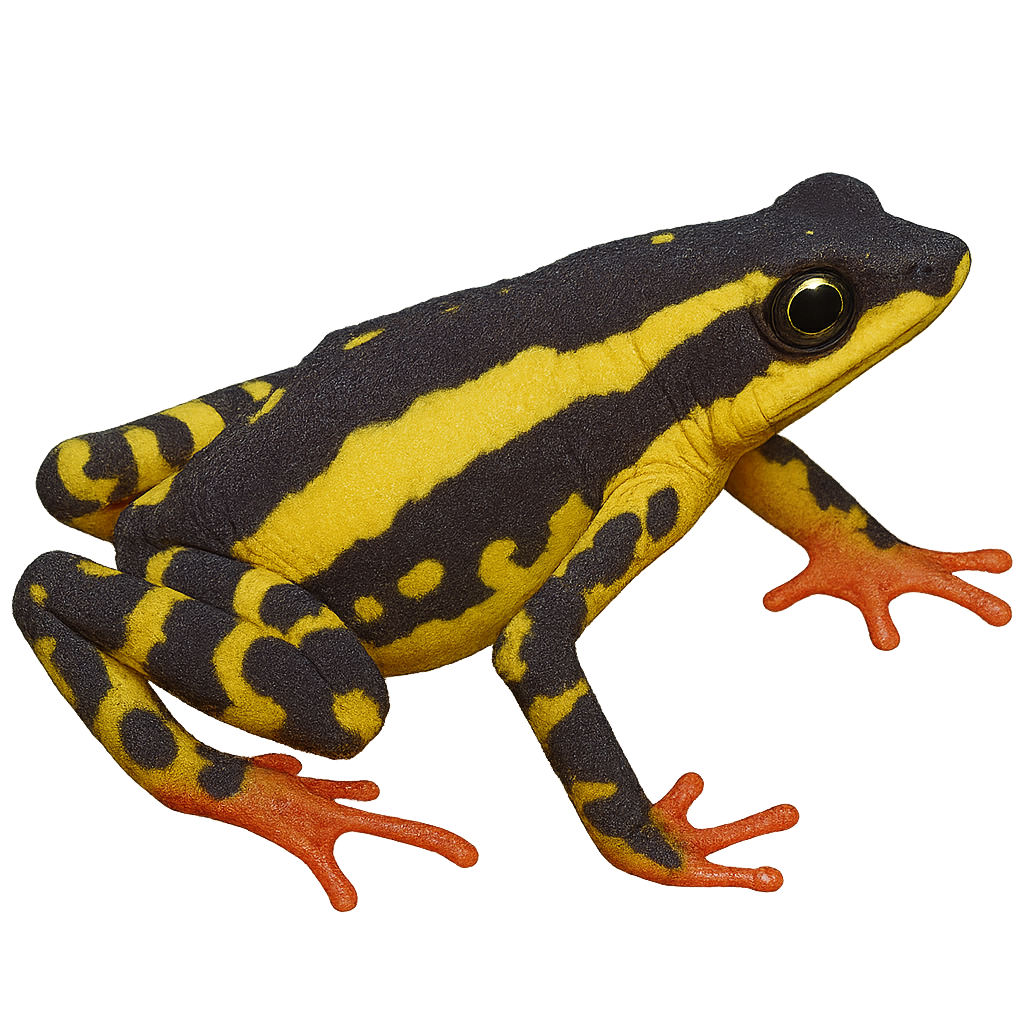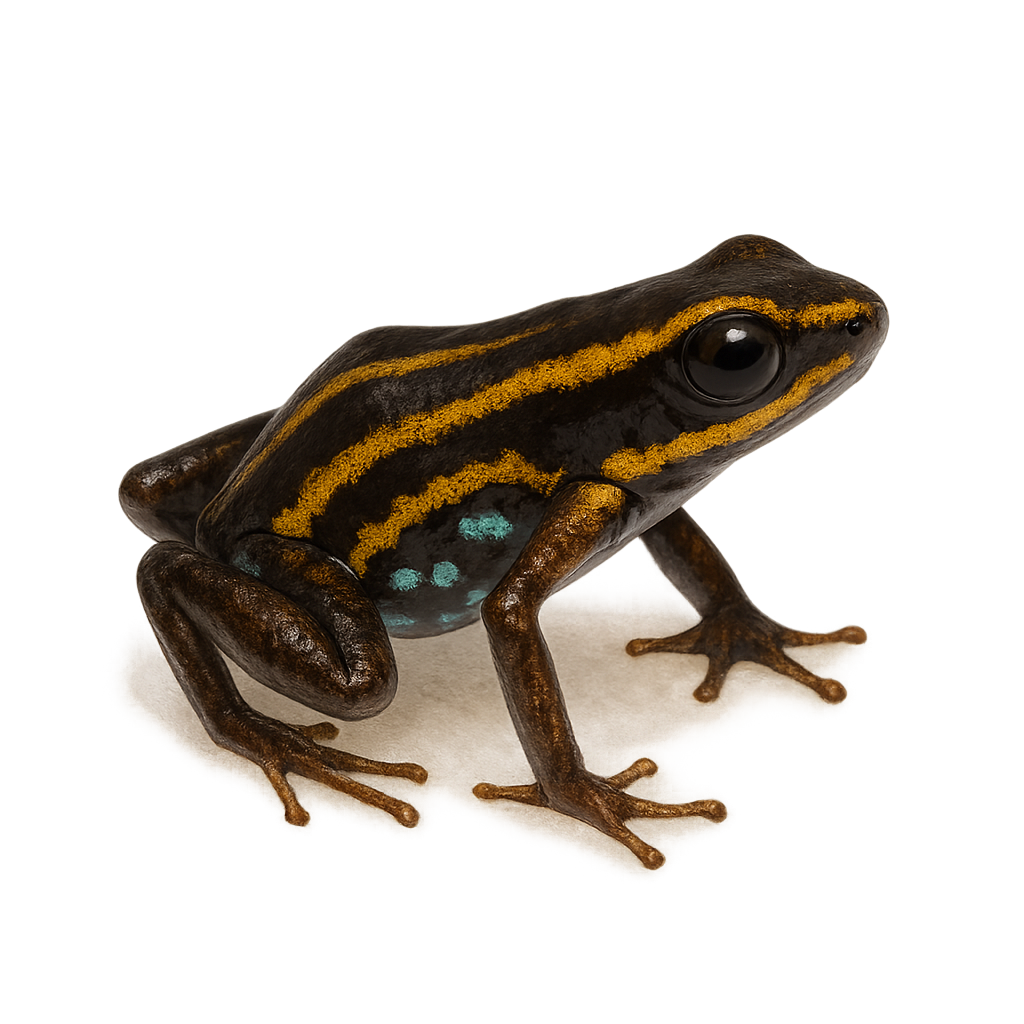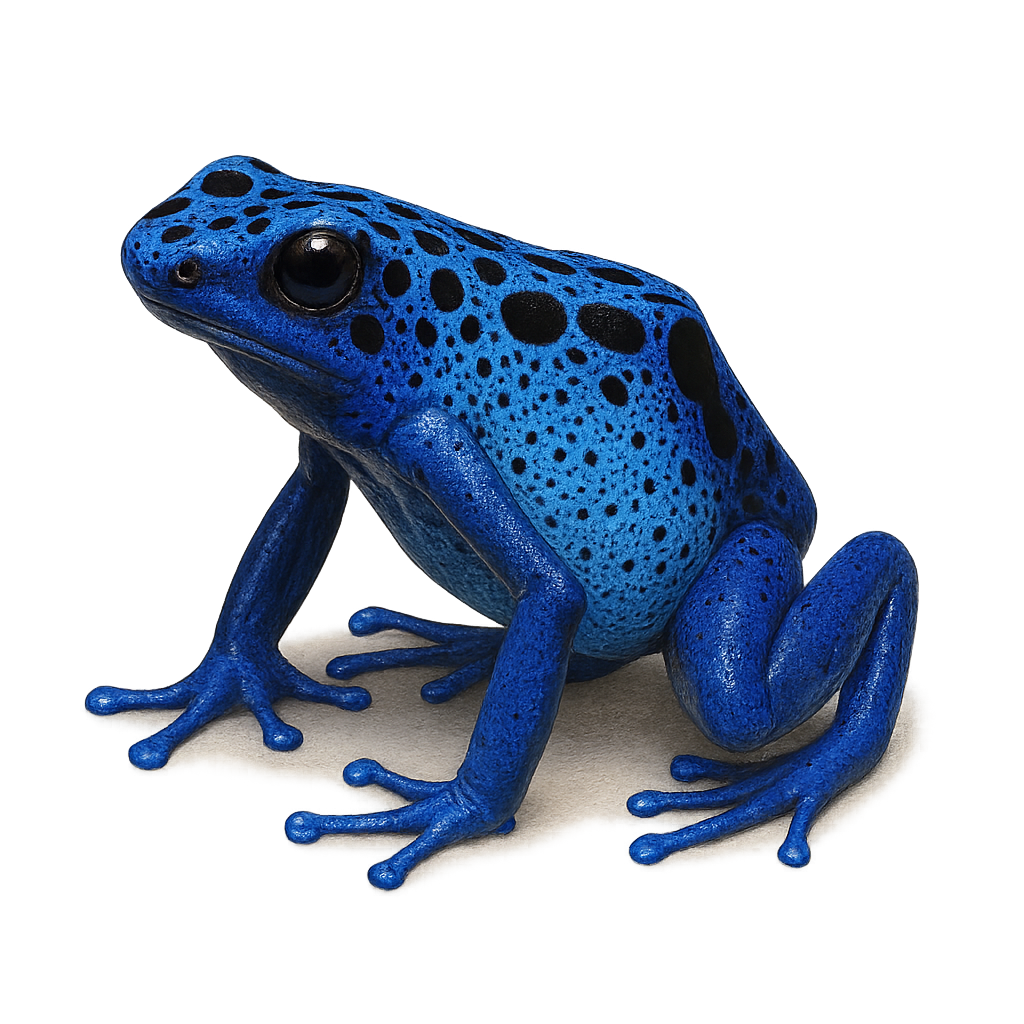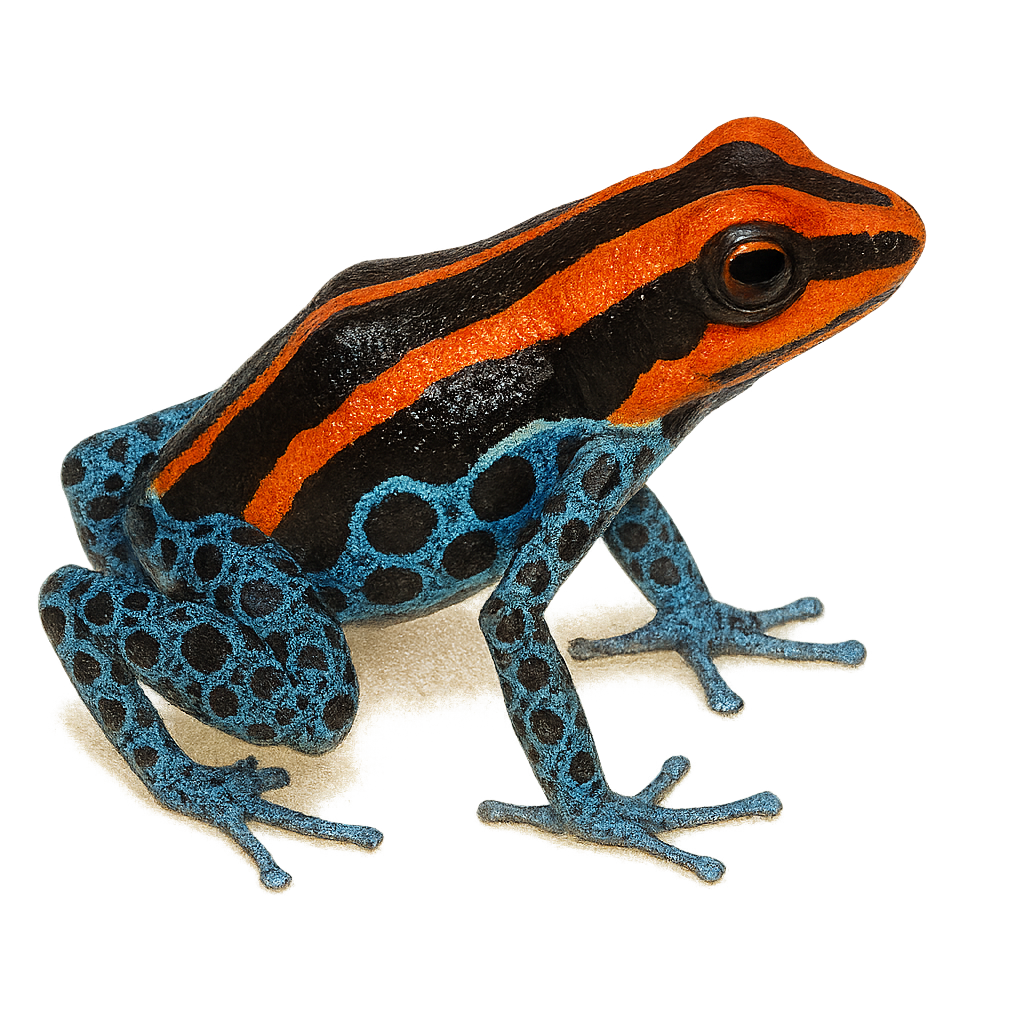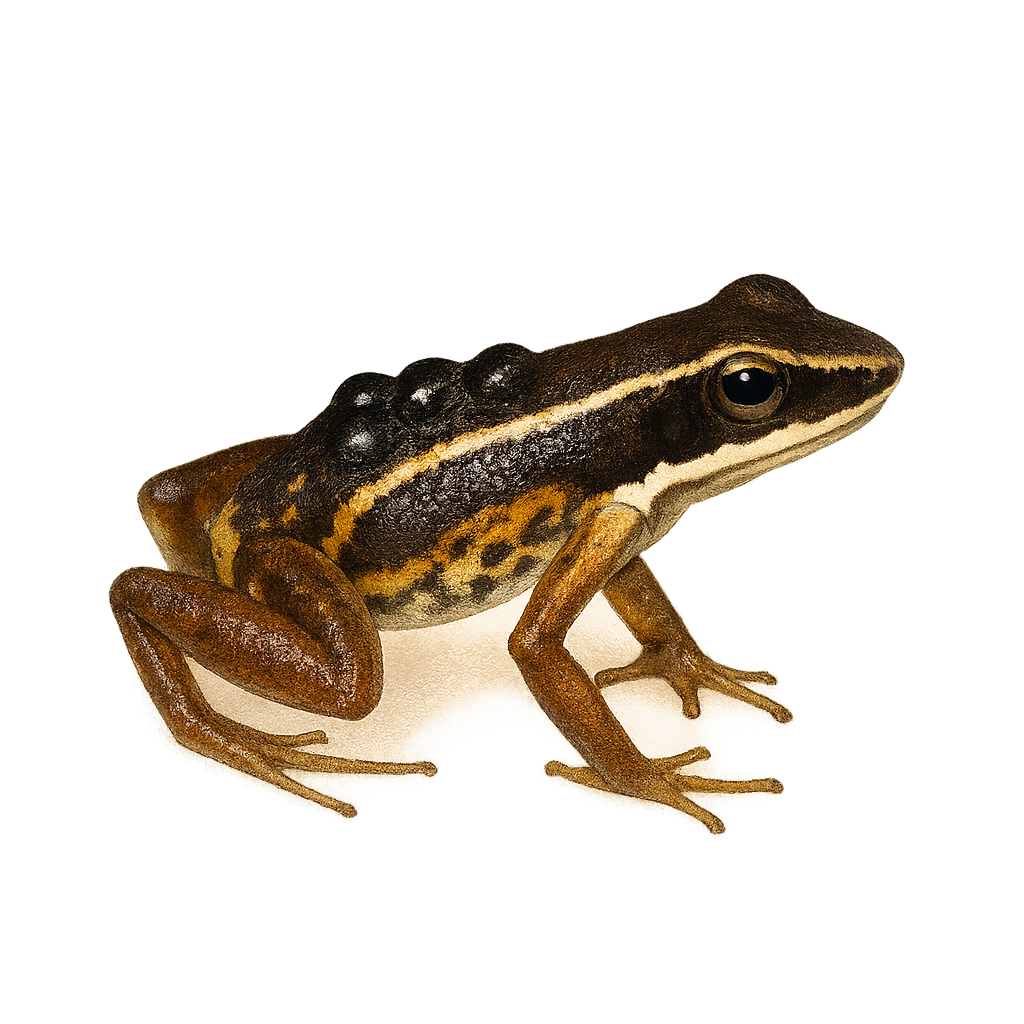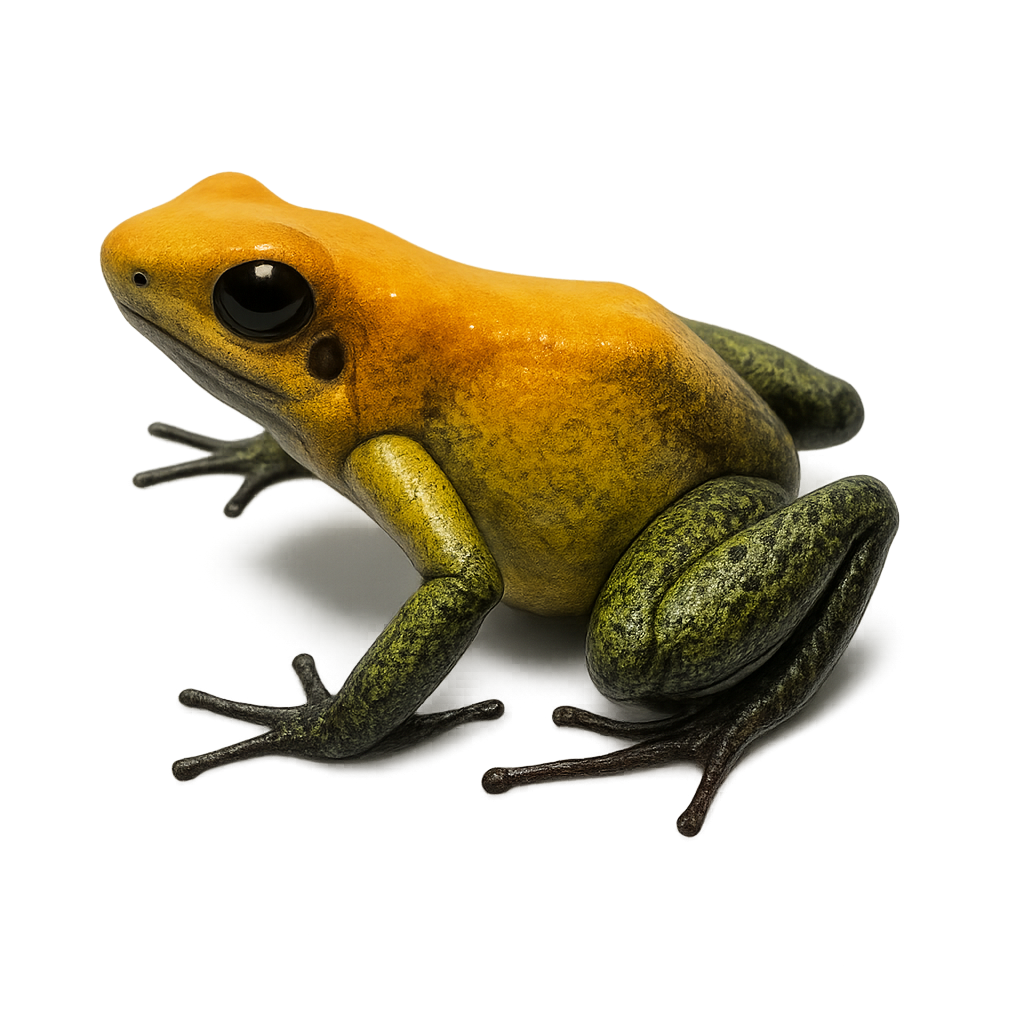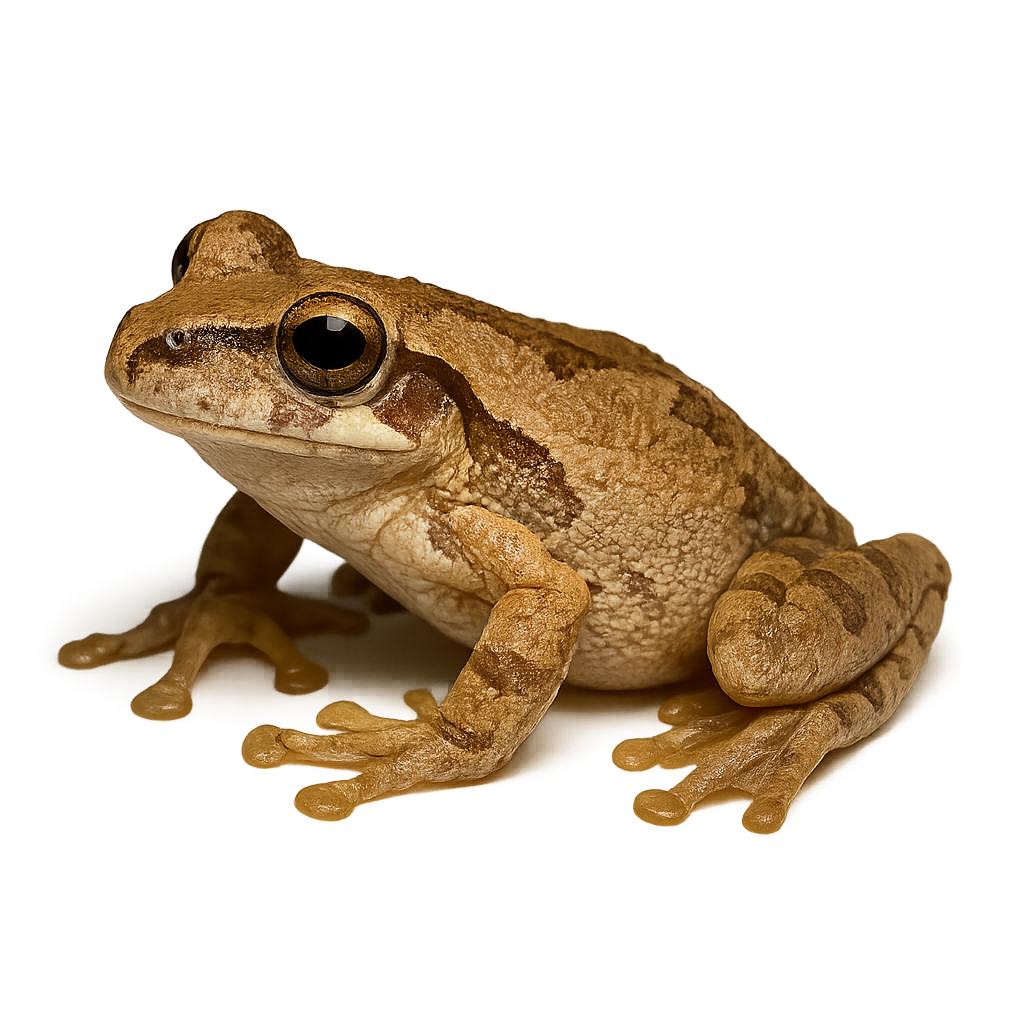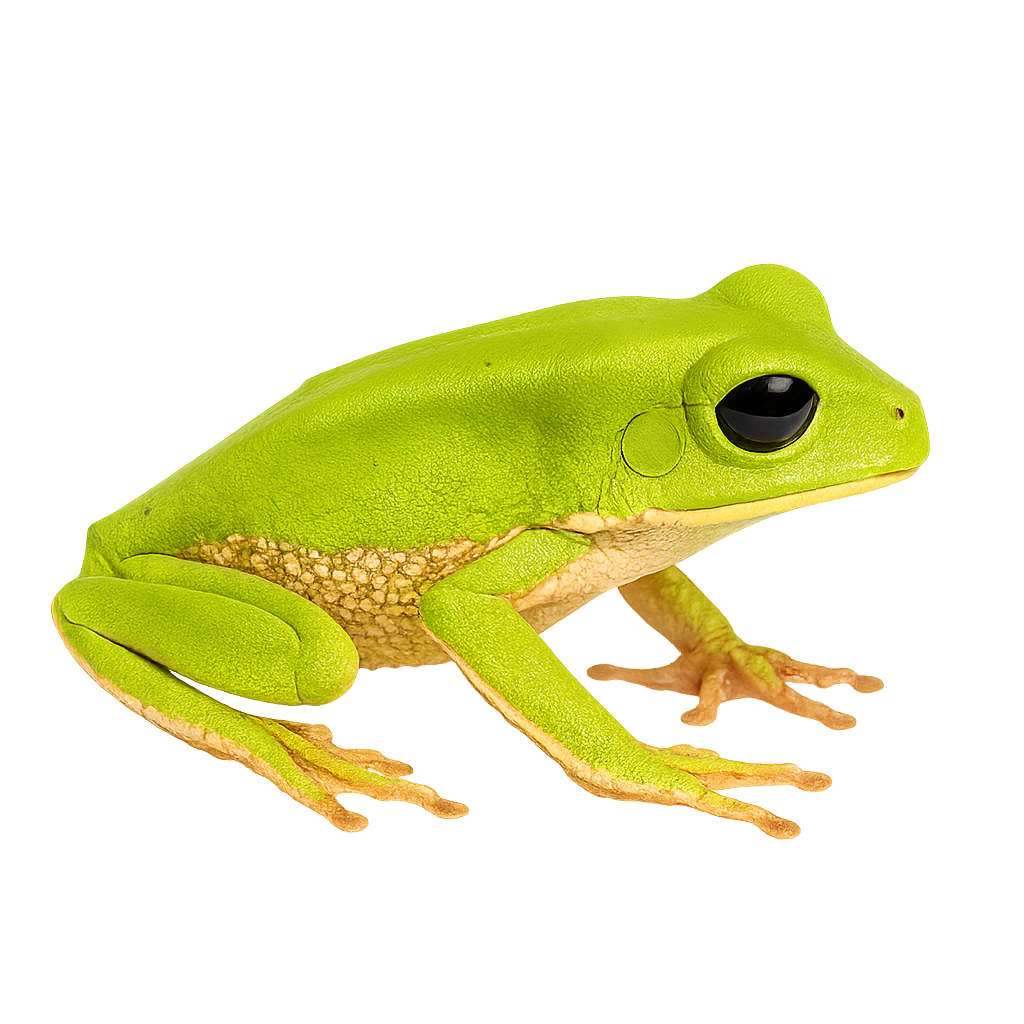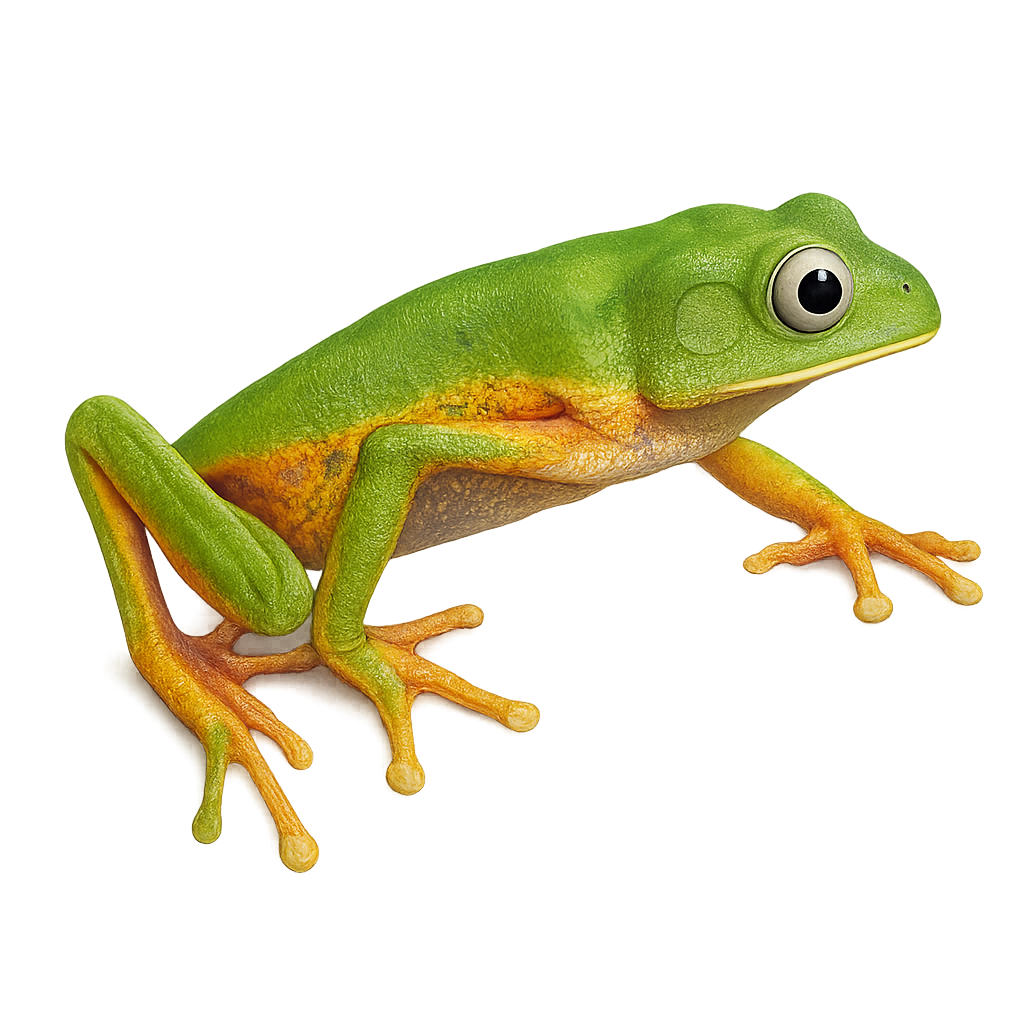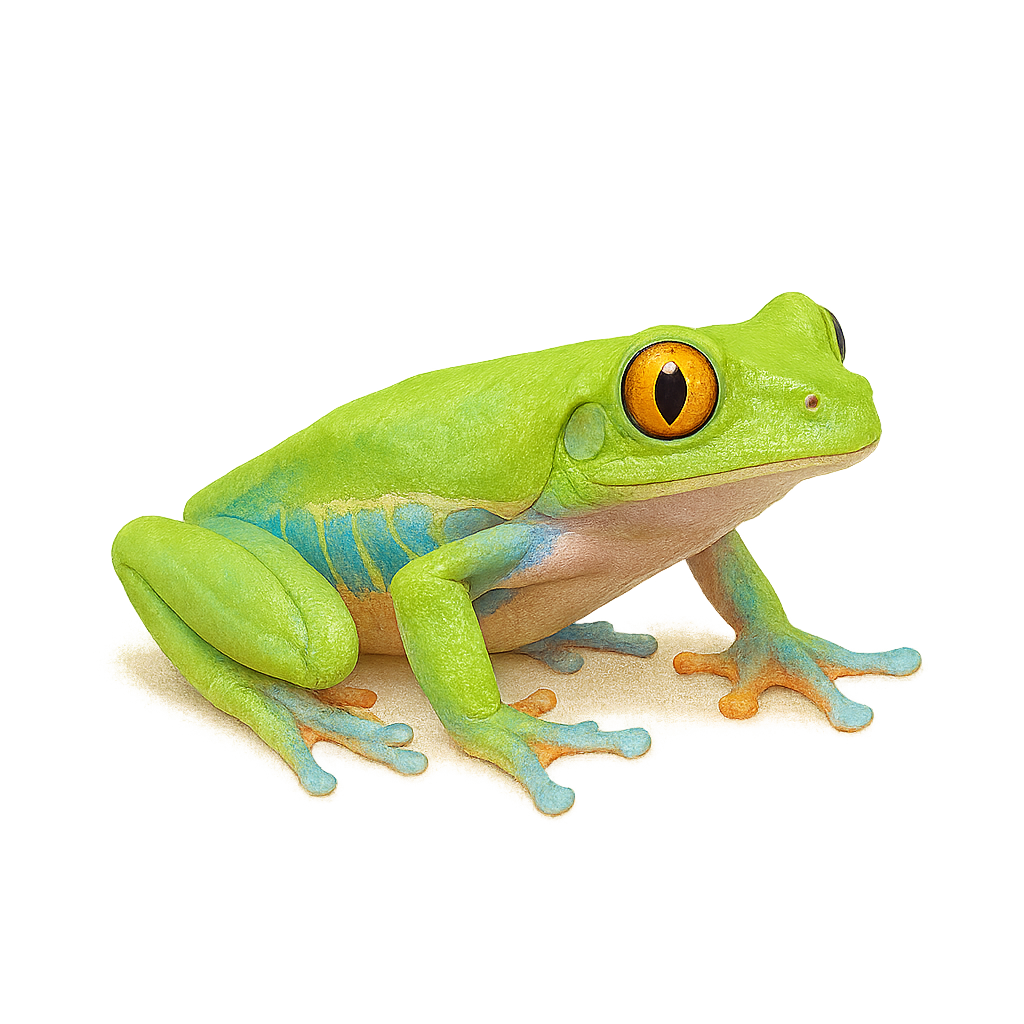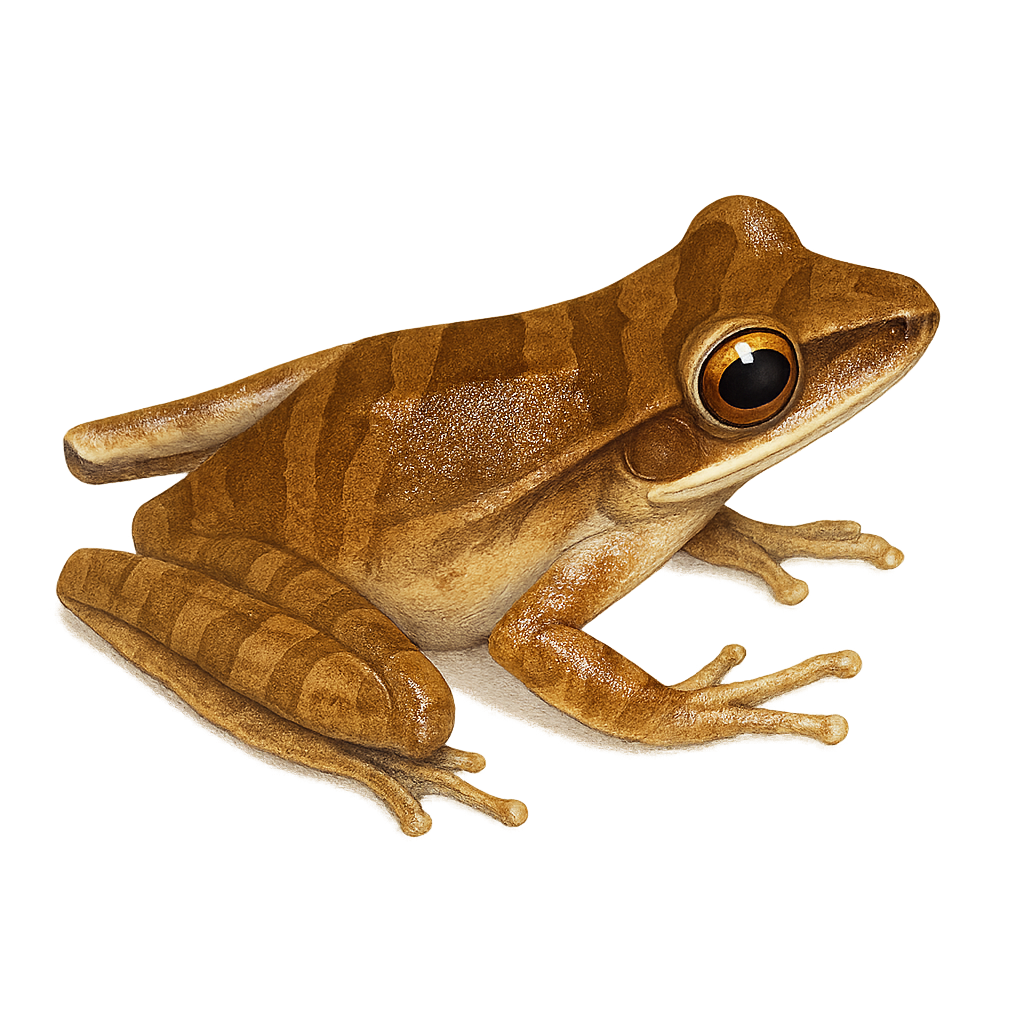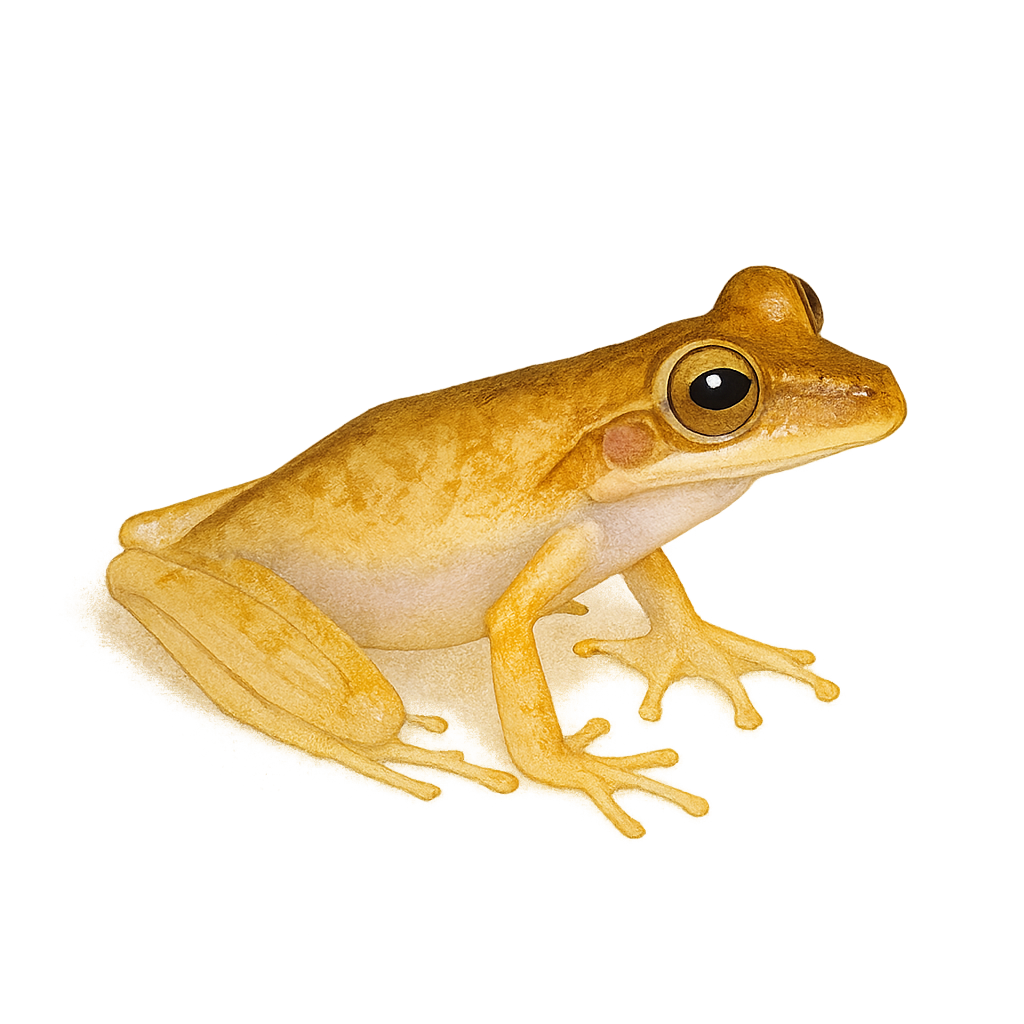The Atelopus tricolor, commonly known as the Bolivian Stubfoot Toad, is a species of toad belonging to the Bufonidae family. Native to the humid tropical forests of Ecuador, this small amphibian is easily recognizable by its brightly colored skin, often adorned with yellow, green, and black patterns. Typically measuring between 3 and 5 cm, it is known for its ability to blend into its surroundings to evade predators. Unfortunately, this species is critically endangered due to habitat loss and fungal diseases affecting many amphibian populations. Conservation efforts are crucial to ensure its survival.
The Blue‑bellied poison frog, or Andinobates minutus, is a small, brightly colored frog native to the tropical rainforests of Colombia and Panama. Known for its vivid, toxic skin, it serves as a defense mechanism against predators. Typically measuring between 12 and 17 mm, this species displays hues ranging from blue to red, often with distinctive black patterns. It primarily inhabits leaf litter and feeds on small insects and arthropods. The Minute Poison Frog is diurnal, being active mainly during the day. Although its population is stable, it faces threats from deforestation and habitat loss.
The Blue Poison Dart Frog, scientifically known as Dendrobates azureus, is a small, brightly colored frog native to the rainforests of Suriname. Its vivid blue skin is dotted with black spots, making it easily recognizable. This bright coloration serves as a warning to potential predators, as it secretes potent toxins through its skin. Measuring about 3 to 4 cm in length, this species is diurnal and spends most of its time hunting small insects. It is often found in humid areas, near streams and ponds. Although its natural habitat is limited, it is popular in the pet trade, leading to conservation efforts to protect its wild populations.
Ranitomeya benedicta is a small, brightly colored frog native to the humid rainforests of Peru. Known for its vivid colors, ranging from blue to black with yellow or orange patterns, it serves as a warning to potential predators of its toxicity. This species primarily inhabits dense, moist undergrowth, where it feeds on small insects. It is diurnal and spends most of its time foraging or hiding among leaves. Reproduction typically occurs during the rainy season when conditions are optimal for tadpole development. Eggs are laid in moist locations, and tadpoles are transported by parents to water bodies.
The Dendrobates tinctorius, also known as the Blue Poison Dart Frog, is a vibrant species of toxic frog native to the humid tropical forests of South America, primarily in Guyana, Brazil, and Suriname. This frog is easily recognizable by its bright blue color, which serves as a warning to predators of its toxicity. Dendrobates tinctorius are primarily insectivorous and feed on small insects. Their bright color comes from the toxins of the insects they consume in their natural habitat. In captivity, they are not toxic as their diet changes. This frog is also known for its discreet behavior and primarily nocturnal habits.
The Mantidactylus femoralis is a frog species endemic to Madagascar, predominantly found in the island's humid tropical forests. It is identifiable by its robust thighs and brown coloration, which allows it to blend into its natural surroundings. This medium-sized frog has smooth skin and subtle patterns that vary slightly among individuals. It plays a crucial role in the ecosystem as an insect predator, helping to regulate invertebrate populations. Although its habitat is threatened by deforestation, it remains relatively widespread in protected areas. Its ability to adapt to different microhabitats provides it with a survival advantage.
Hyloxalus abditaurantius is a small, brightly colored frog native to the humid tropical forests of South America, primarily in Ecuador. It is distinguished by its vivid coloration, often with shades of orange and brown, allowing it to blend effectively into its natural habitat. This species is typically found near streams and wetlands, where it primarily feeds on insects. Although discreet, it plays an essential role in the ecosystem by regulating insect populations. Its reproduction usually occurs during the rainy season when conditions are ideal for tadpole development.
The Phyllobates bicolor, or bicolored poison dart frog, is a venomous frog species native to the humid rainforests of Colombia. Known for its smooth, shiny skin, it often displays bright yellow with shades of green or blue. This vivid coloration serves as a warning to potential predators of its toxicity. Indeed, Phyllobates bicolor secretes a powerful toxin, batrachotoxin, which can be lethal. It typically measures between 3 and 4.5 cm in length. This species is diurnal and primarily feeds on small insects. It plays a crucial role in its ecosystem by regulating insect populations. Unfortunately, habitat destruction poses a threat to its survival.
Baudin's Tree Frog is a fascinating amphibian species, often found in the humid tropical forests of Central America, primarily in Mexico, Costa Rica, and Guatemala. It is easily recognized by its bright coloration, which ranges from light green to yellow, with distinct patterns on the legs and back. This frog is semi-arboreal, meaning it spends part of its time on trees and bushes, near stagnant waters or streams. It is nocturnal and uses its coloration to blend into its environment when resting. It is also capable of making long leaps to escape predators.
The Brazil-nut poison frog, or Adelphobates castaneoticus, is a small, brightly colored frog native to the humid tropical forests of Brazil. It is known for its smooth, shiny skin, featuring shades of brown and black, often with distinctive patterns that serve as camouflage. This diurnal species primarily feeds on small insects and arthropods. It plays a crucial role in the ecosystem by regulating insect populations. Although its skin contains toxic alkaloids, it is not dangerous to humans unless ingested. Unfortunately, deforestation threatens its natural habitat, leading to a decline in its population.
The Boquete Rocket Frog, scientifically known as Silverstoneia nubicola, is a small arboreal frog species native to the humid tropical forests of Central America. It is particularly noted for its vibrant coloration, ranging from emerald green to brown, with distinctive patterns on its back. This frog is often observed in areas of dense vegetation, where it skillfully camouflages among leaves and branches. It plays a crucial role in the ecosystem as an insect predator, thus contributing to the regulation of invertebrate populations. Although its natural habitat is threatened by deforestation, it is currently classified as a species of least concern by the IUCN.
The Mantella pulchra is a small, brightly colored frog endemic to Madagascar. It is known for its vivid green and black colors, which serve as a warning to potential predators about its toxicity. It primarily inhabits lowland tropical rainforests. This diurnal species feeds mainly on small insects. Its skin secretes toxic alkaloids, providing an effective defense against predators. The Mantella pulchra is threatened by deforestation and illegal trade, leading to its classification as a vulnerable species by the IUCN. Reproduction typically occurs during the rainy season when conditions are optimal for tadpole development.
Boulenger's Poison Frog is an amphibian species native to the tropical forests of Brazil. It is primarily recognizable by its bright color and distinctive skin patterns, which range from bright yellow to green. These frogs produce a potent venom that protects them from predators. It is primarily terrestrial and lives in humid, wooded areas, often near streams. The Boulenger’s Poison Frog is nocturnal, hiding under leaves or in ditches during the day to avoid the heat of the sun. Its bright color also serves as a warning signal to predators.
The Black-eyed Monkey Frog is a species of tree frog found primarily in the humid tropical forests of the Amazon. It is recognizable by its smooth, green skin, often speckled with white or yellow spots, which allows it to camouflage effectively among the leaves. This frog is nocturnal and spends the day hidden under leaves or in tree crevices. It feeds mainly on insects and other small invertebrates. The Black-eyed Monkey Frog plays a crucial role in the ecosystem by regulating insect populations. It is also an important indicator of the health of tropical forests, as it is sensitive to environmental changes such as deforestation and pollution.
The Brownbelly leaf frog is an arboreal frog native to the tropical forests of South America, mainly in Brazil. It is distinguished by its smooth skin and vibrant colors, often green with distinctive patterns on its legs. This species is known for its nocturnal behavior, hiding in dense vegetation during the day. It plays a crucial role in the ecosystem as a predator of insects. Its ability to secrete chemical substances for defense against predators is fascinating. Although not critically endangered, deforestation threatens its natural habitat, which could affect its population in the long term.
The Blue-sided Treefrog, or Agalychnis annae, is a tree-dwelling frog species native to the humid tropical forests of Costa Rica. It is easily recognizable by its bright red eyes, vivid green body, and blue sides. This frog is primarily nocturnal, resting on leaves during the day. It plays a crucial role in the ecosystem as an insect predator. Unfortunately, it is threatened by deforestation and habitat loss. Conservation efforts are essential to ensure its survival. Its thin, permeable skin makes it sensitive to environmental changes, making it an important indicator of habitat health.
The Basin treefrog, or Boana lanciformis, is an amphibian species in the Hylidae family. It is primarily found in the humid tropical forests of South America, particularly in Brazil, Colombia, and Venezuela. Its green and brown coloration allows it to blend effectively among foliage. It has a slender body and long legs, adapted for arboreal life. The Basin treefrog is nocturnal and primarily feeds on insects. It plays a crucial role in the ecosystem by regulating insect populations. Although its habitat is threatened by deforestation, it is currently classified as "least concern" by the IUCN.
The Basin tree frog, scientifically known as Hypsiboas lanciformis, is a species of arboreal frog native to the humid tropical forests of South America. It is characterized by its slender body and long limbs, which allow it to move nimbly among the trees. Its coloration ranges from green to brown, providing excellent camouflage among the foliage. This species is primarily nocturnal, feeding on insects and other small invertebrates. It plays a crucial role in the ecosystem by controlling insect populations. Although its conservation status is currently stable, deforestation poses a potential threat to its natural habitat.


